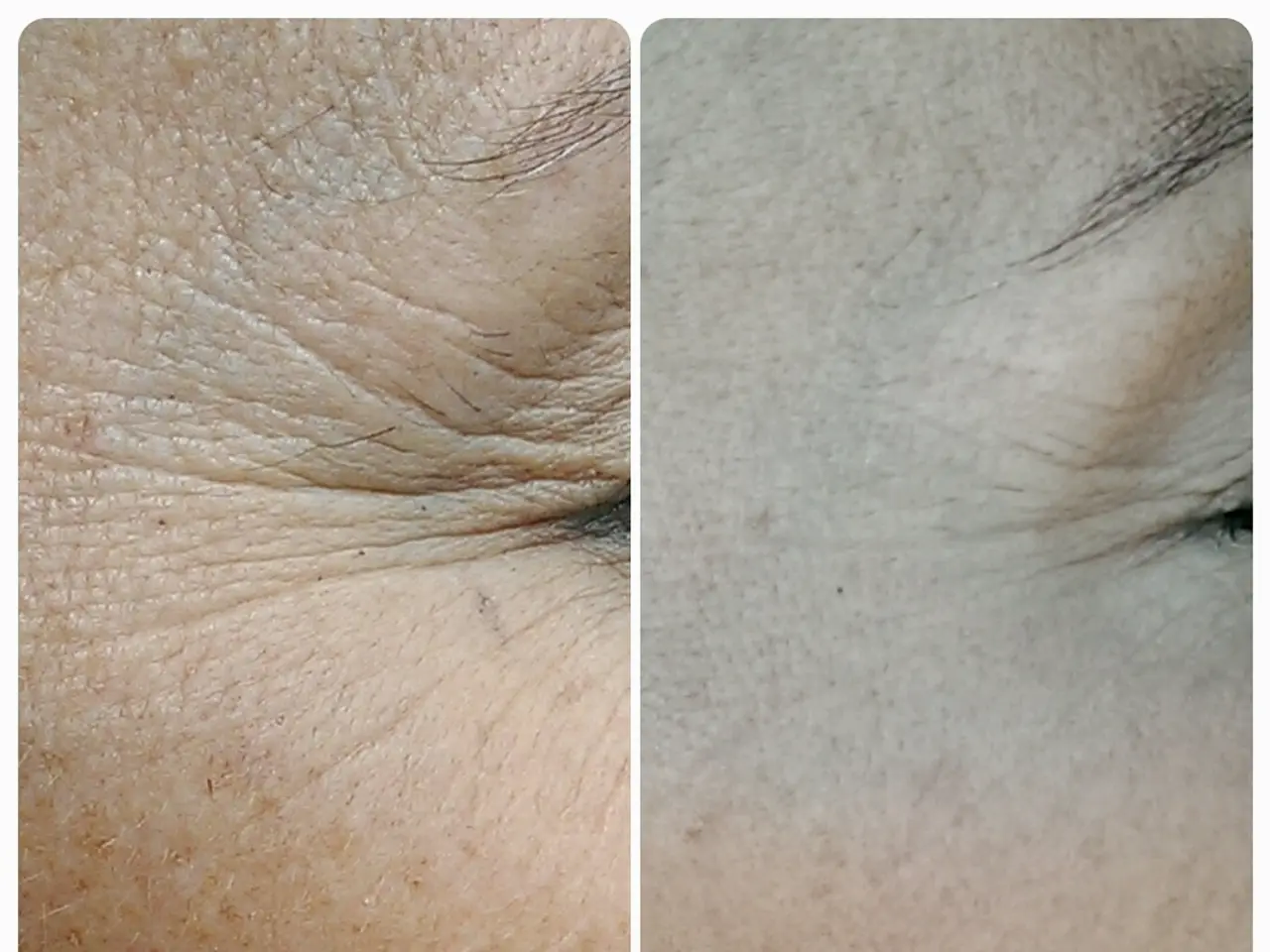Strategies to Eliminate Freckles: Discovering Methods for Brighter Complexion
Freckles, small concentrated spots of melanin that appear on sun-exposed skin, are medically known as ephelides. While they aren't harmful in themselves, they indicate sun sensitivity, making it crucial to protect your skin to prevent further damage.
Freckles are primarily triggered by sun exposure and genetic factors. UV rays cause melanocytes to produce extra pigment, leading to the appearance of freckles. A key factor in managing freckles is consistency, as most treatments take 4-12 weeks to show visible results.
Dermatologist-Approved Treatments
Advanced lasers like PicoSure or Q-switched Nd:YAG lasers are effective in targeting melanin clusters to break down pigmentation. These treatments, often requiring 3-8 sessions for best results, offer relatively fast, lasting results but may carry risks such as burns or pigment changes.
Customized chemical peels using glycolic acid, salicylic acid, TCA, or Cosmelan exfoliate the pigmented top layers to promote even skin tone over multiple sessions (around 4-6). Microdermabrasion, a gentler exfoliation method, improves superficial pigmentation and skin texture, often combined with other treatments.
Topical prescription creams, such as hydroquinone, kojic acid, arbutin, retinoids, azelaic acid, and vitamin C derivatives, are used to reduce melanin production and speed cell turnover. However, consistent use is required, with caution due to possible irritation or sun sensitivity.
At-Home Remedies
Over-the-counter products containing key active ingredients like hydroquinone (under supervision), retinoids, azelaic acid, kojic acid, and vitamin C serums can gradually lighten freckles and improve overall skin tone. A gentle skincare routine that avoids irritation and supports skin barrier health is also essential.
Preventive Measures
Strict sun protection is paramount, as freckles are largely triggered by UV exposure. Use a broad-spectrum sunscreen with at least SPF 50 daily and reapply frequently. For enhanced protection, dermatologists suggest layering a chemical sunscreen (e.g., containing oxybenzone) with a physical block (e.g., zinc oxide, titanium dioxide).
Limit sun exposure during peak hours and wear protective clothing. Avoid skincare products or medications that may increase pigmentation risk.
Natural Remedies and Cautions
Natural remedies like lemon juice and apple cider vinegar are not effective and can irritate skin. Stick to clinically proven ingredients like vitamin C and niacinamide for fading freckles over time.
If freckles persist or change shape/size, consult a dermatologist to rule out any underlying conditions.
In summary, fading freckles effectively involves targeted professional treatments like lasers and chemical peel, consistent use of topical lightening agents, diligent sun protection, and personalized dermatological guidance. Daily sunscreen with a broad-spectrum SPF 30 or higher is essential for preventing freckles from darkening.
- For effective freckle fading, one might consider professional treatments such as PicoSure lasers, chemical peels, or microdermabrasion, combined with the consistent use of topical prescription creams containing hydroquinone, kojic acid, arbutin, retinoids, azelaic acid, or vitamin C derivatives.
- To manage freckles and maintain skin health, it's crucial to protect your skin with sunscreen, preferably with broad-spectrum SPF 50, and follow a skincare routine that supports skin barrier health, ensuring consistency in use of at-home remedies like over-the-counter products containing hydroquinone, retinoids, azelaic acid, kojic acid, or vitamin C serums.




